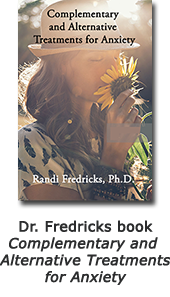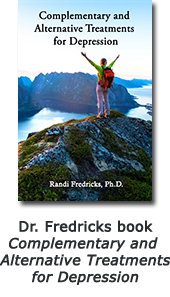Progressive Muscle Relaxation
 Progressive muscle relaxation, sometimes called “progressive relaxation,” is a natural anxiety remedy for learning to monitor and control the state of muscular tension. It was developed by American physician Edmund Jacobson in the early 1920s.
Progressive muscle relaxation, sometimes called “progressive relaxation,” is a natural anxiety remedy for learning to monitor and control the state of muscular tension. It was developed by American physician Edmund Jacobson in the early 1920s.
Jacobson wrote several books on the subject of Progressive Relaxation. The technique involves learning to monitor tension in each specific muscle group in the body by deliberately inducing tension in each group. This tension is then released, with attention paid to the contrast between tension and relaxation.
A substantial amount of research has been done on muscle relaxation techniques. They can be helpful in managing a variety of health conditions. A modification of the technique is Biofeedback in which one uses external measuring devices to indicate how successful one is in relaxing and then to use those techniques to relax without the help of external measuring devices.
Progressive Muscle Relaxation For Anxiety
Progressive muscle relaxation is a wonderful way to reduce anxiety, agitation and stress and promote relaxation, calm and peace within yourself. It is a technique that takes practice, and requires some commitment on your part to achieve results. However, the results are well worth any effort, as a calm and relaxed body and mind are less prone to health issues than an agitated body and mind.
Progressive muscle relaxation is a way of releasing tension in muscles. Often taught in yoga and exercise classes, on self-help tapes and by various instructors – from massage therapists to psychologists – there are many variations of progressive relaxation.
How Progressive Muscle Relaxation Works
Progressive muscle relaxation teaches you how to relax your muscles through a two step process. First, you systematically tense particular muscle groups in your body, such as your neck and shoulders. Next, you release the tension and notice how your muscles feel when you relax them. This exercise will help you to lower your overall tension and stress levels, and help you relax when you are feeling anxious. It can also help reduce physical problems such as stomachaches and headaches, as well as improve your sleep.
 People with anxiety difficulties are often so tense throughout the day that they don’t even recognize what being relaxed feels like. Through practice you can learn to distinguish between the feelings of a tensed muscle and a completely relaxed muscle.
People with anxiety difficulties are often so tense throughout the day that they don’t even recognize what being relaxed feels like. Through practice you can learn to distinguish between the feelings of a tensed muscle and a completely relaxed muscle.
Then, you can begin to “cue” this relaxed state at the first sign of the muscle tension that accompanies your feelings of anxiety. By tensing and releasing, you learn not only what relaxation feels like, but also to recognize when you are starting to get tense during the day.
A common progressive muscle relaxation technique is the following:
- Lie on your back in a comfortable position.
- Take a series of deep slow breaths and focus your awareness on different parts of the body in turn, becoming aware of any muscular tension and releasing it. One way to do this is to first tense a muscle deliberately and then relax it. Start with the front of the body, tensing and relaxing the muscles of the upper face, then moving on to the jaw, neck, chest, front of the arms, abdomen, thighs, lower legs, feet and toes. Then, do the same down the back of the body.
- Finally, lie still with the eyes closed, concentrating on your breath and enjoying the feeling of peace and freedom from tension.
You can easily learn to do this on your own, but it is pleasant to follow spoken instructions from someone with a soothing voice. You can incorporate progressive relaxation into your daily routine and find ways to make it more portable. For instance, you can modify it for a sitting position and do it at your place of work.
Benefits of Progressive Muscle Relaxation
One of the benefits of progressive muscle relaxation is its moderating effect on emotions. This is a long-term benefit, but simple relaxation techniques can also work in acute situations as a symptomatic treatment.
If you feel anxious, a few minutes of progressive muscle relaxation will often put you back in a good mood. It can teach you how to process stress differently and complements other techniques, such as breathing, visualization or yoga. It requires commitment to a formal practice and is helpful to have an instructor, at least for the very start.




